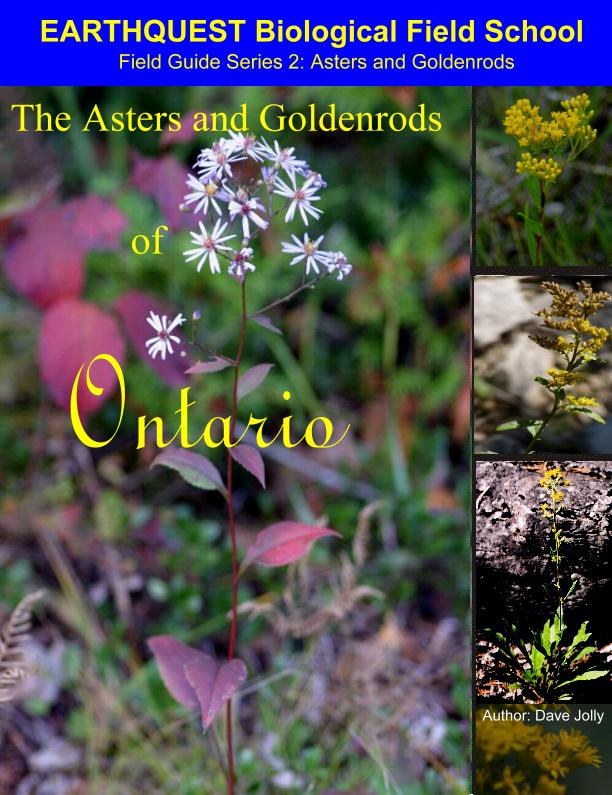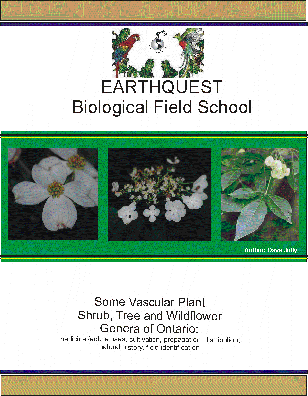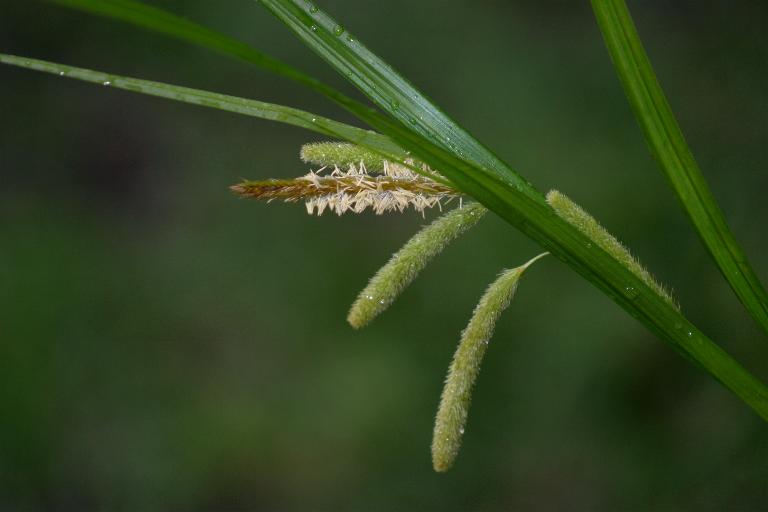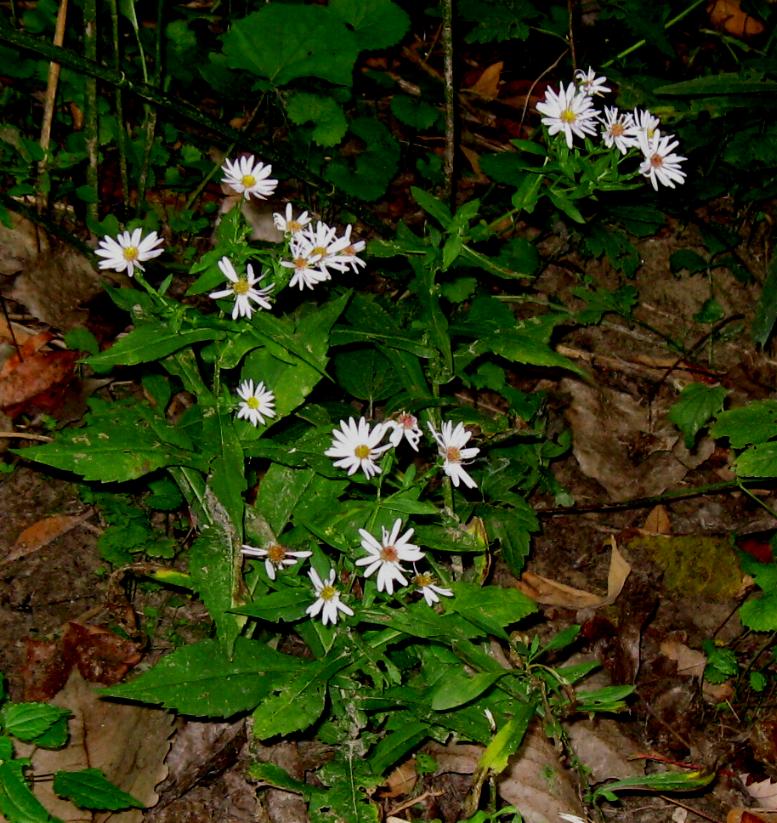These workshops are designed to meet the demands in the environmental industry to provide well qualified people who can visually field identify plants to species level within 5
seconds or less. They are intensive 4 hour sessions conducted at natural areas which harbour a high biodiversity of vascular plants. Workshops are focused exclusively on plant species field ID, which is Level 3 (Level 1 is family identification, Level 2 is genera identification); differentiation between confusing look-a-like plants, where 1 is a provincially or federally listed Species at Risk (SAR) eg. endangered American chestnut (Castanea centata) vs. Chinese chestnut (Castanea mollissima).
i. Where and how to look while performing field investigations
ii. Quick and easy visual field recognition by sight (positive ID within 5 seconds or less)
iii. Field investigation techniques; pros and cons
iv. Mitigation measures to implement should habitat be disturbed, altered or destroyed from proposed construction projects, etc. (ie. following best practices management strategies under the MNR Natural Heritage Assessment Guide, Significant Wildlife Habitat Technical Guide, etc.)
These workshops are highly recommended for students, ecologists, planners, species at risk biologists, botanists, biologists, naturalists, consultants or those involved with conducting field surveys on plant populations. We would also be open to the possibility of covering material that you may want more information about - eg. how to perform field surveys so that they optimize time and budget constraints along with staff skills. We can also do the same with birds - eg. a 3 hour workshop to natural areas to learn 20 - 25 species of SAR birds - eg. Black and white warbler (Mniotitla varia), vs. Prothontary warbler (Prothonotaria citrea), S1B/END/END, etc. An excellent way to learn some SAR birds which you may come across during field surveys in a short time! Perhaps you should consider a plant + bird workshop, which can easily be done on a weekend, so it doesn't interfere with work hours.
We must warn students that these field site visits often venture into tick infested areas, so please be advised that you must take precautions to reduce your chances of contracting Lyme disease. It is recommended that you also enroll in the following courses to enhance your chances of becoming more attractive to employers as these plant courses do show up on many job postings
Level 1 & 2 bird courses
For a complete description of the core International FBT Program courses, specialty and correspondence courses please download
International FBT Program Courses
Level 3 FBT SAR and rare plant workshop - $240.00 CAD +HST + SAR plants of Ontario book - volume 2 ($25.00) - 4 hours
This workshop focuses on the 17 - 25 SAR and provincially rare species which may be found in the eastern half of North America during the growing season. It emphasizes common traits shared among confusing common look-a-likes and rare plant survey methodology while performing environmental impact studies, natural heritage assessments and vegetation inventories, mitigation measures and reclamation techniques. Each unit is typically 1 - 1.5 hours in length, give or take weather, plants available and search efforts.
Approximately 20 of the most confusing plants that may be encountered while performing natural heritage assessments are covered including. This is a must participate venture with excellent photography opportunities;
1. American gingseng (Panax quiquefolius); S3/END
2. Soft hairy false gromwell (Onosmodium molle); S2
3. Blue ash (Fraxinus quadrangulata); S2
4. Compass plant (Silphium laciniatum); S1
5. American chestnut (Castanea dentata); S2/END
6. Common hoptree (Ptelea trifoliata); S3/THR/THR
7. Cucumber magnolia (Magnolia acuminata); S2/END
8. Eastern flowering dogwood (Cornus florida); S4/END/END
9. Honey locust (Gleditsia tricanthos); S2/THR/THR
10. Kentucky coffee tree (Gymnocladus dioicus); S2/THR/THR
11. Northern pin oak (Quercus ellipsoidalis); S3
12. Ohio buckeye (Aesculus glabra); S1
13. Pawpaw (Asimina triloba); S3
14. Butternut (Juglans cinerea); S3?/END/END
15. Fern leaved yellow foxglove (Aereolaria pedicularia); S3
16. Virginia goatsrue (Trephrosia virginiana); S1
17. Bird'sfoot violet (Viola pedata); S1/END/END
18. Crooked stemmed aster (Aster prenanthoides); S2/THR/THR
19. Stiff leaved goldenrod (Solidago rigida var.rigida); S3
20. Burning bush or Wahoo (Euonymus purpureus); S3
Unit #1: Field identification techniques
The art and science of how to apply the "5 second rule" to identify plants to species within 5 seconds or less
 SAR plant species descriptions and visual cues used to aid positive identification
SAR plant species descriptions and visual cues used to aid positive identification
 Species characteristics and traits shared among families and genera
Species characteristics and traits shared among families and genera
 Rare plant survey methodology, mitigation and reclamation techniques
Rare plant survey methodology, mitigation and reclamation techniques
Unit #2: Field diagnostics
We will learn how to quickly differentiate between confusing look-a-like plants, where 1 is an Ontario Species at Risk or provincially rare plant.
 How to identify based on flowerhead shape, shape of upper, middle, bottom leaves, morphology, bark, habitat, flower colour, etc.
How to identify based on flowerhead shape, shape of upper, middle, bottom leaves, morphology, bark, habitat, flower colour, etc.
Dates: June 18 & 19, 2016
Registration: May 30, 2016
Early bird booking bonus: $25.00 (If you book before May 30, 2016)
Level 3 FBT Asters and Goldenrods of Ontario workshop - $240.00 CAD + HST + Asters and Goldenrods of Ontario book ($100.00) - 4 hours
18 species of Asters and Goldenrods of the 60 + species commonly found in the 5 forest regions while performing natural heritage assessments and biological inventories along with several SAR species and confusing look-a-likes
The following plants will be observed, including differentiation among the confusing Canada goldenrod complex;
1. Crooked stemmed aster (Aster prenanthoides); S2/THR/THR
2. Stiff leaved goldenrod (Solidago rigida var.rigida); S3
3. Purple stemmed aster (Aster puniceus)
4. Calico aster (Aster laterifolius)
5. Panicled aster (Aster lanceolatus)
6. Canada goldenrod (Solidago canadensis)
7. Tall goldenrod (Solidago altissima)
8. Late goldenrod (Solidago gigantea)
9. Lance leaved goldenrod (Ethumia gramnifolia)
10. Ohio goldenrod (Solidago ohionensis)
11. Rough leaved goldenrod (Solidago patula)
12. Rough stemmed goldenrod (Solidago rugosa)
13. Old field aster (Aster pilosum)
14. Heath aster (Aster ericoides)
15. Blue stemmed goldenrod (Solidago caesia)
16. Large leaved aster (Aster macrophyllum)
17. Heart leaved aster (Aster cordifolius)
18. Flat topped white aster (Aster umbellatus)
Unit #1: Field identification techniques
The art and science of how to apply the "5 second rule" to identify plants to species within 5 seconds or less
 Aster and goldenrod species descriptions and visual cues used to aid positive identification
Aster and goldenrod species descriptions and visual cues used to aid positive identification
 Species characteristics and traits shared among families and genera
Species characteristics and traits shared among families and genera
Unit #2: Field diagnostics
We will learn how to quickly differentiate between confusing look-a-like plants.
 How to identify based on flowerhead shape, leaf width, morphology, habitat, flower colour, etc.
How to identify based on flowerhead shape, leaf width, morphology, habitat, flower colour, etc.
Dates: October 24 & 25, 2016
Registration: September 30, 2016
Early bird booking bonus: $25.00 (If you book before September 30, 2016)
Level 3 FBT Sedges, rushes and grasses of Ontario workshop - $240.00 CAD + HST - 4 hours
30 species of terrestrial, aquatic and wetland gramnoids commonly found while performing natural heritage assessments, their Ecological Land Classification (ELC) vegetation types and biological inventories along with several SAR species and confusing look-a-likes
The following plants will be observed, including differentiation among the confusing look-a-likes;
1. Pom pom sedge (Carex bebbii)
2. Woodland sedge (Carex blanda)
3. Bristly sedge (Carex comosa)
4. Fringed sedge (Carex crinitus)
5. Star or Inland sedge (Carex interior)
6. Bladder sedge (Carex intumescens)
7. Bristle stalked sedge (Carex leptalea)
8. Plantain leaved sedge (Carex plantaginea)
9. Retrose sedge (Carex retrosa)
10. Awl fruited sedge (Carex stipata)
11. Three fruited sedge (Carex trisperma)
12. Rose sedge (Carex rosea)
13. Long beaked sedge (Carex utriculata)
14. Canadian rush (Juncus canadensis)
15. Soft rush (Juncus effusus)
16. Path rush (Juncus tenuis)
17. Rice cut grass (Leersia oryzoides)
18. Bottlebrush grass (Hystrix patula)
19. Kentucky blue grass (Poa pratensis)
20. Indian grass (Sorghastrun nutans)
21. Fowl manna grass (Poa palustris)
22. Fowl manna grass (Glyceria striata
23. Canada bluestem (Calamagrostis canadensis)
24. Big bluestem (Andropogon gerardii)
25. Smooth brome grass (Bromis inermis)
26. Meadow fescue (Festuca pratensis)
27. Riverbank rye grass (Elymus riparius)
28. Orchard grass (Dactylis glomerata)
29. Dark green bulrush (Scirpus atrovirens)
30. Red-sheathed bulrush (Scirpus microcarpus)
Unit #1: Field identification techniques
The art and science of how to apply the "5 second rule" to identify plants to species within 5 seconds or less
 Gramnoid species descriptions and visual cues used to aid positive identification
Gramnoid species descriptions and visual cues used to aid positive identification
 Species characteristics and traits shared among families and genera
Species characteristics and traits shared among families and genera
Unit #2: Field diagnostics
We will learn how to quickly differentiate between confusing look-a-like plants.
 How to identify based on inflorescence shape, leaf width, flower structure, habitat, etc.
How to identify based on inflorescence shape, leaf width, flower structure, habitat, etc.
Dates: June 25 & 26, 2016
Registration: May 30, 2016
Early bird booking bonus: $25.00 (If you book before May 30, 2016)
Application form





